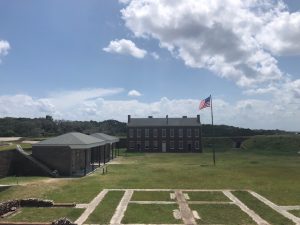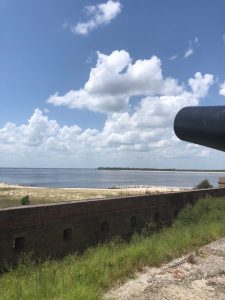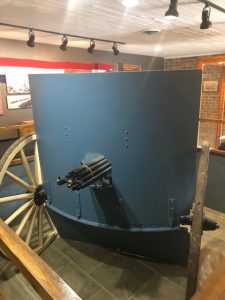ECW Weekender: Fort Clinch

In the northeast corner of the state, on the northern tip of Amelia Island, Florida, sits one of the best preserved 19th-century brick and mortar fortifications. Fort Clinch.

(author collection)
The fort was part of the third system program, part of the United States Congress’s $800,000 appropriation for seacoast defense in 1816, following the ending of the War of 1812. Although 200 brick coastal defenses were envisioned, only approximately 30 were built on both the Atlantic and Pacific Coasts between 1816 and 1867.
Construction of Fort Clinch began at the conclusion of the Second Seminole War in 1847, although the Spanish had fortified the area as early as 1736. In 1849 the installation received its name, in honor of the late General Duncant Lamont Clinch, who had died that same year.

(author collection)
With Florida’s secession in early 1861, Confederate forces seized Fort Clinch, which provided the defense for the St. Mary’s River, a waterway outlet and haven for blockade runners. However, Confederate occupation was short-lived as General Robert E. Lee ordered the evacuation of the area in March 1862. The Federals would soon thereafter occupy nearby Fernandina and Fort Clinch, along with taking control of the outlying islands of that portion of Florida and Georgia for the duration of the conflict.
United States soldiers would be at the installation until 1869, when Fort Clinch was placed in caretaker status until briefly brimming with armed personnel during the Spanish-American War near the end of the 19th-century. After the U.S. Army’s abandonment of Fort Clinch in September 1898, the place gradually deteriorated.
During the Great Depression, the Civilian Conservation Corps undertook a project to restore Fort Clinch to its Civil War-era appearance. The state of Florida purchased the initial 256-acres, which included the fort and surrounding area, in 1935, and three years later Fort Clinch State Park opened to the public. The fort now encompasses just one portion of a larger 1,400-acre park, which still bears the name, Fort Clinch State Park.

(author collection)
However, the U.S. Army would come again to Fort Clinch, closing the fort to the public during the Second World War when its prime location along the Atlantic seaboard housed communications and security personnel and apparatuses. After the end of hostilities, the fort was opened to the public once again and in 1972 was placed on the National Register of Historic Places.

(author collection)
The fort is open 9 a.m. to 5 p.m. daily and the state park is open from 8 a.m. to sundown all-year around. The entrance fee to the park is $6 per vehicle and access to the fort is $2.50 per person. Living history programs and tours are offered at certain times of the year and more information about those activities and how to plan your visit can be found here. Strolling the grounds, parapets, and also peeking into the various rooms to learn about garrison life provide an insight into what life was like at Fort Clinch during the Federal occupation. In addition a gift shop, museum with exhibits, and a park film are also part of the visit.
Enjoy your visit to northeast Florida, where beaches and history meet!
Gatling gun. Circa late 1800’s? Early machine gun.